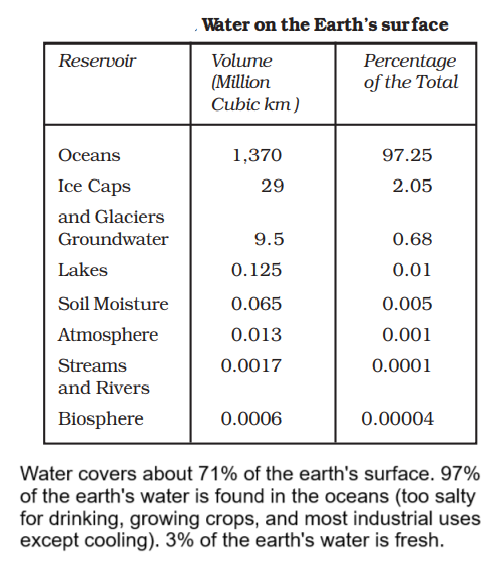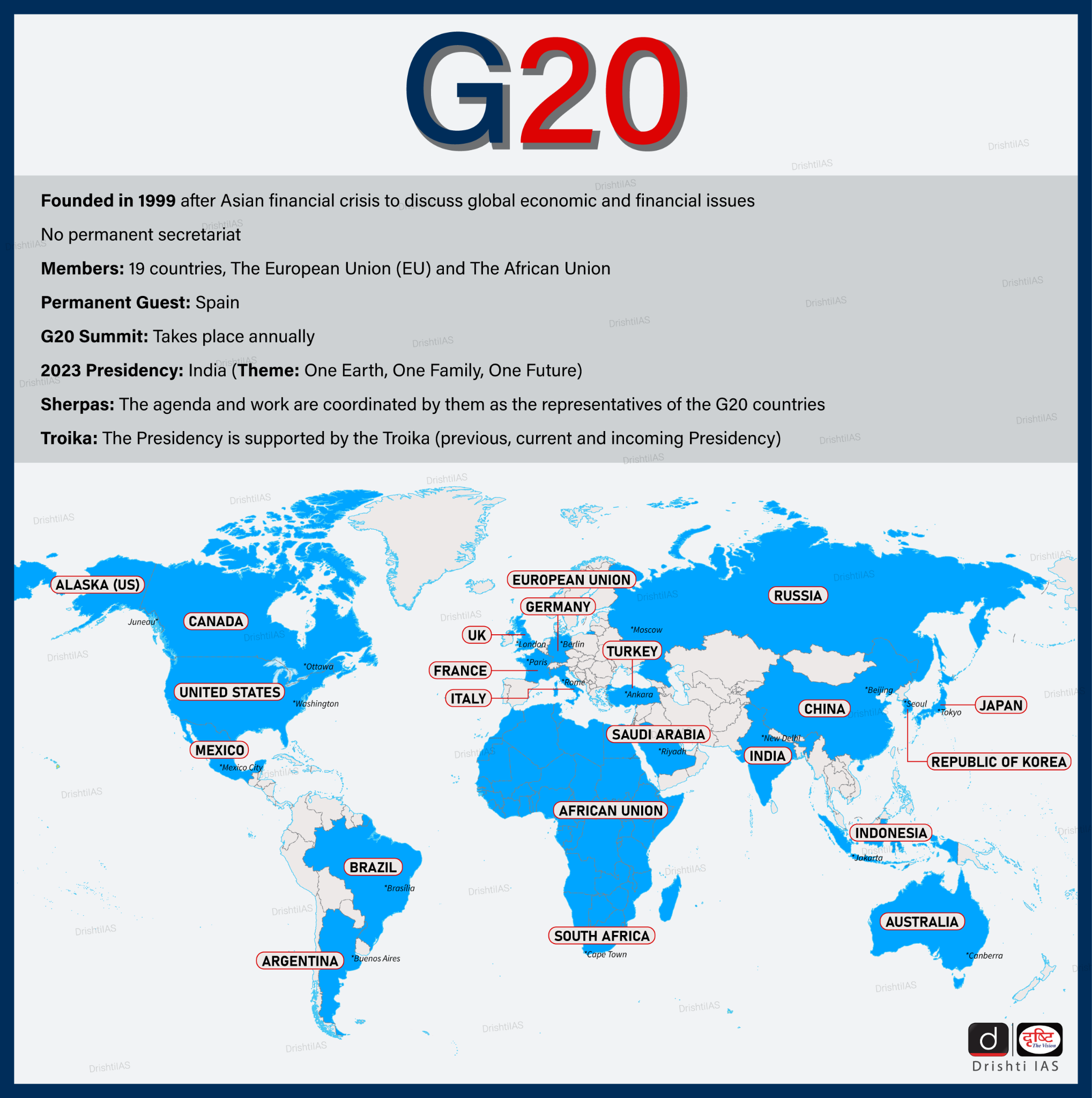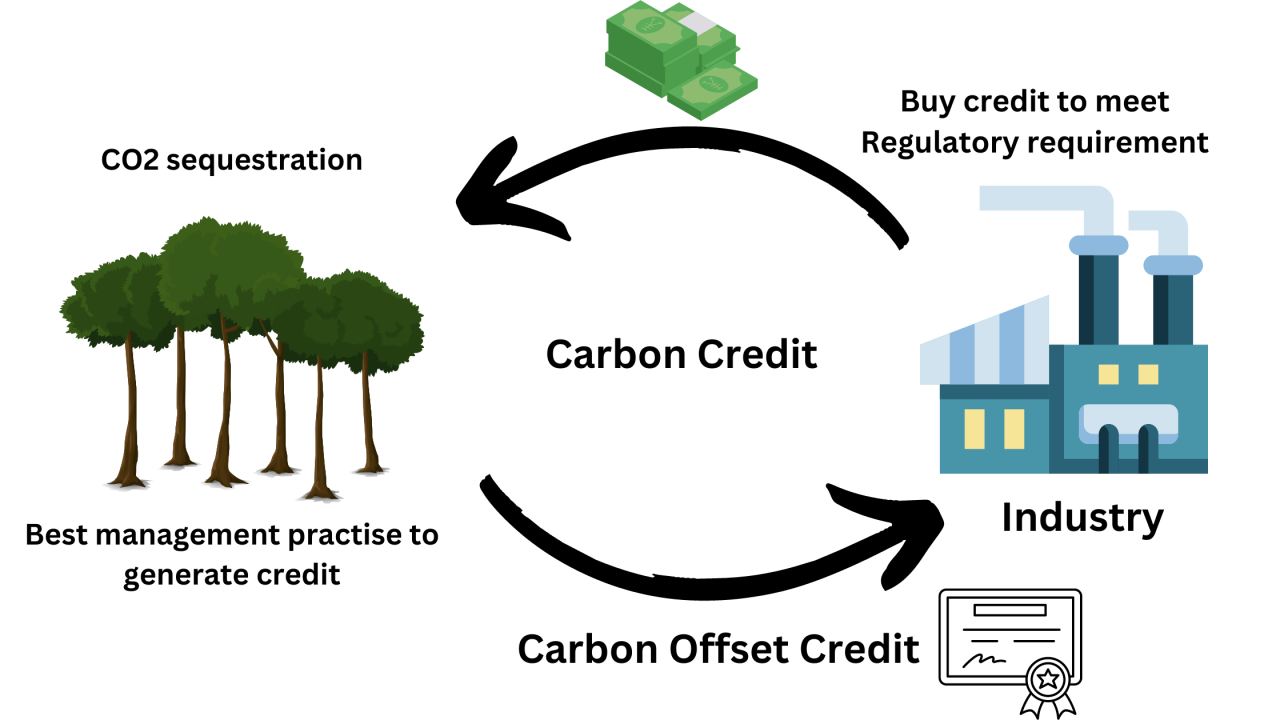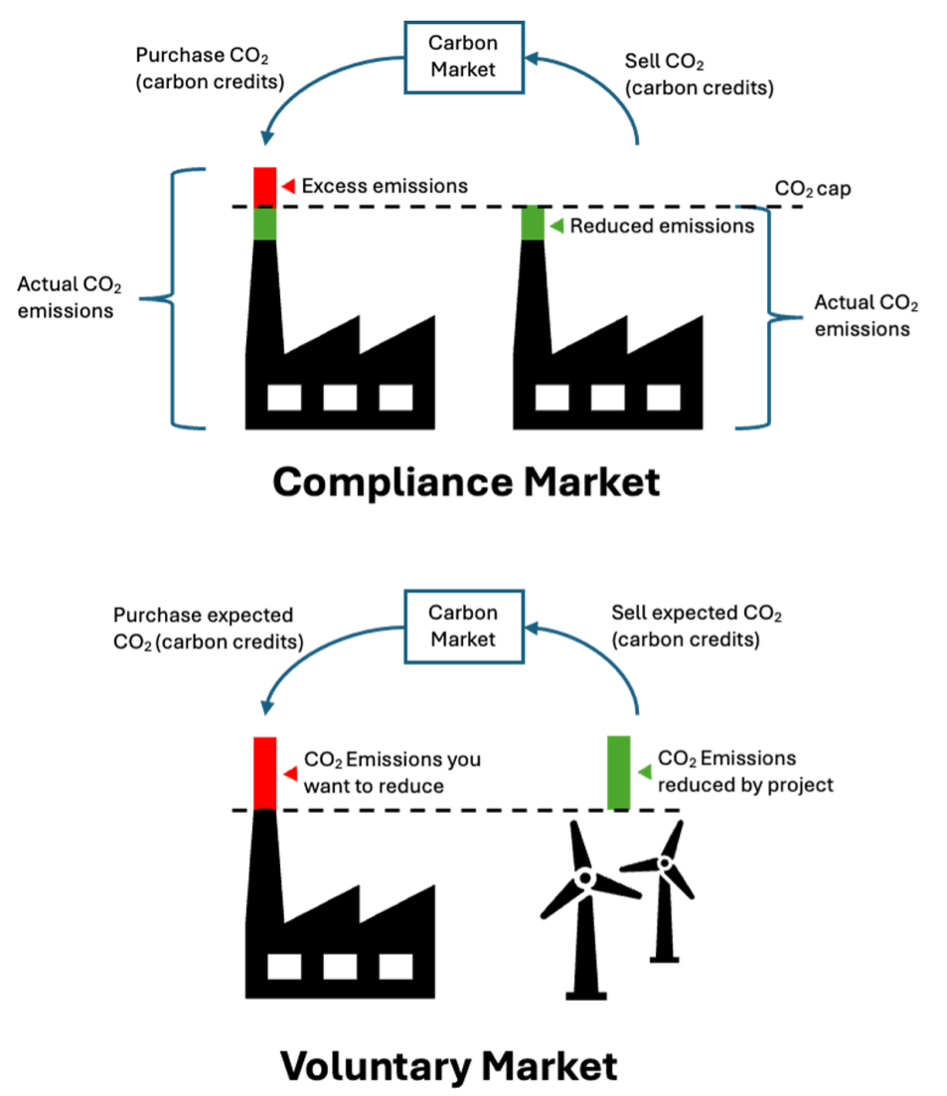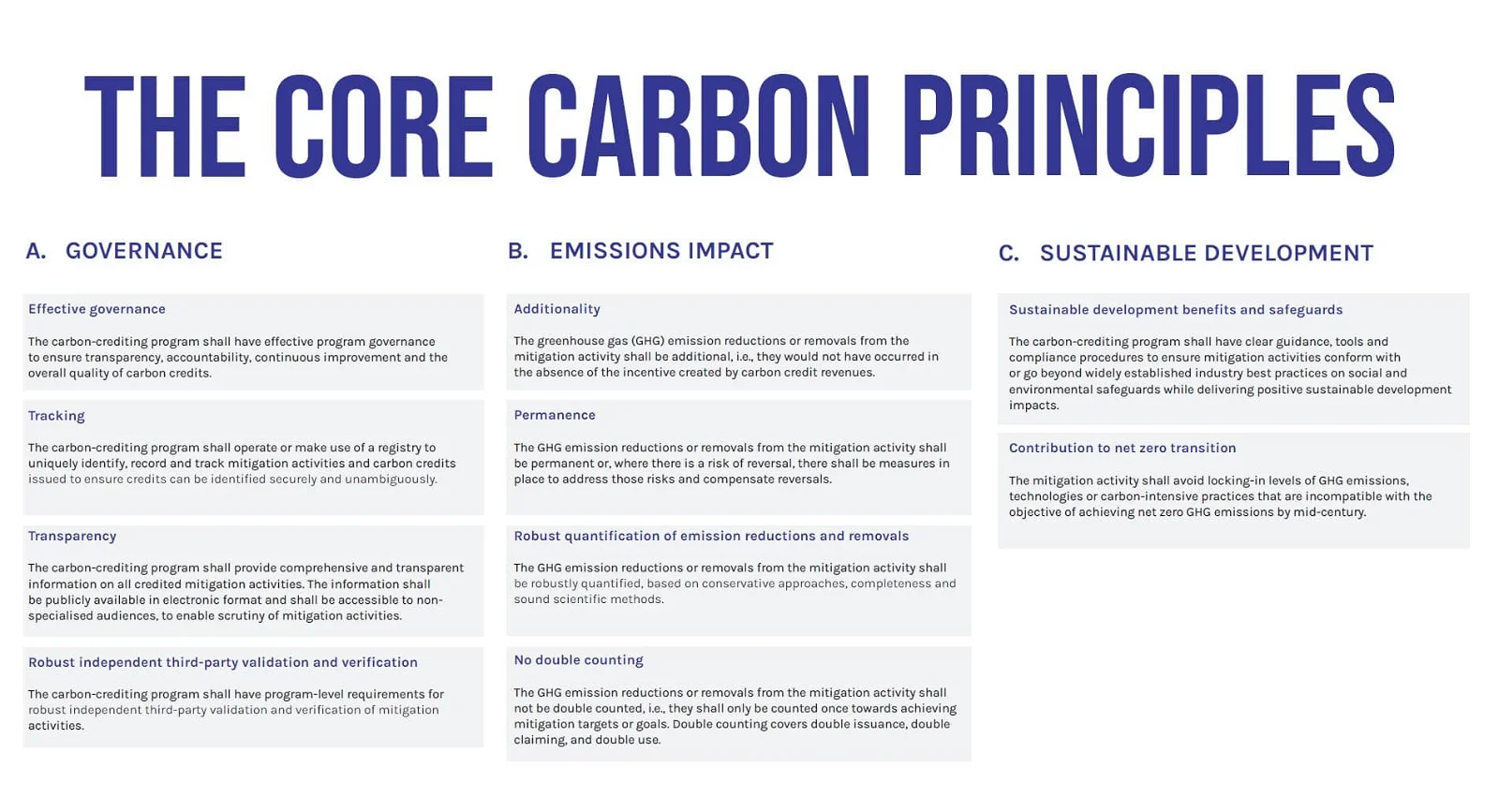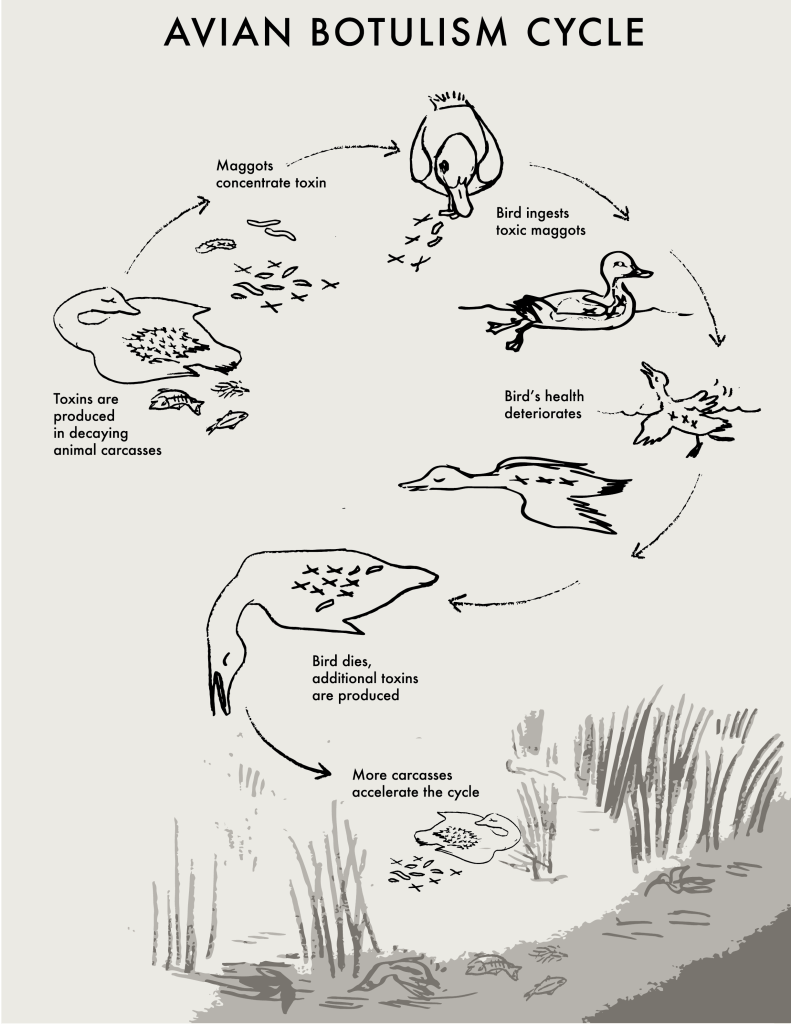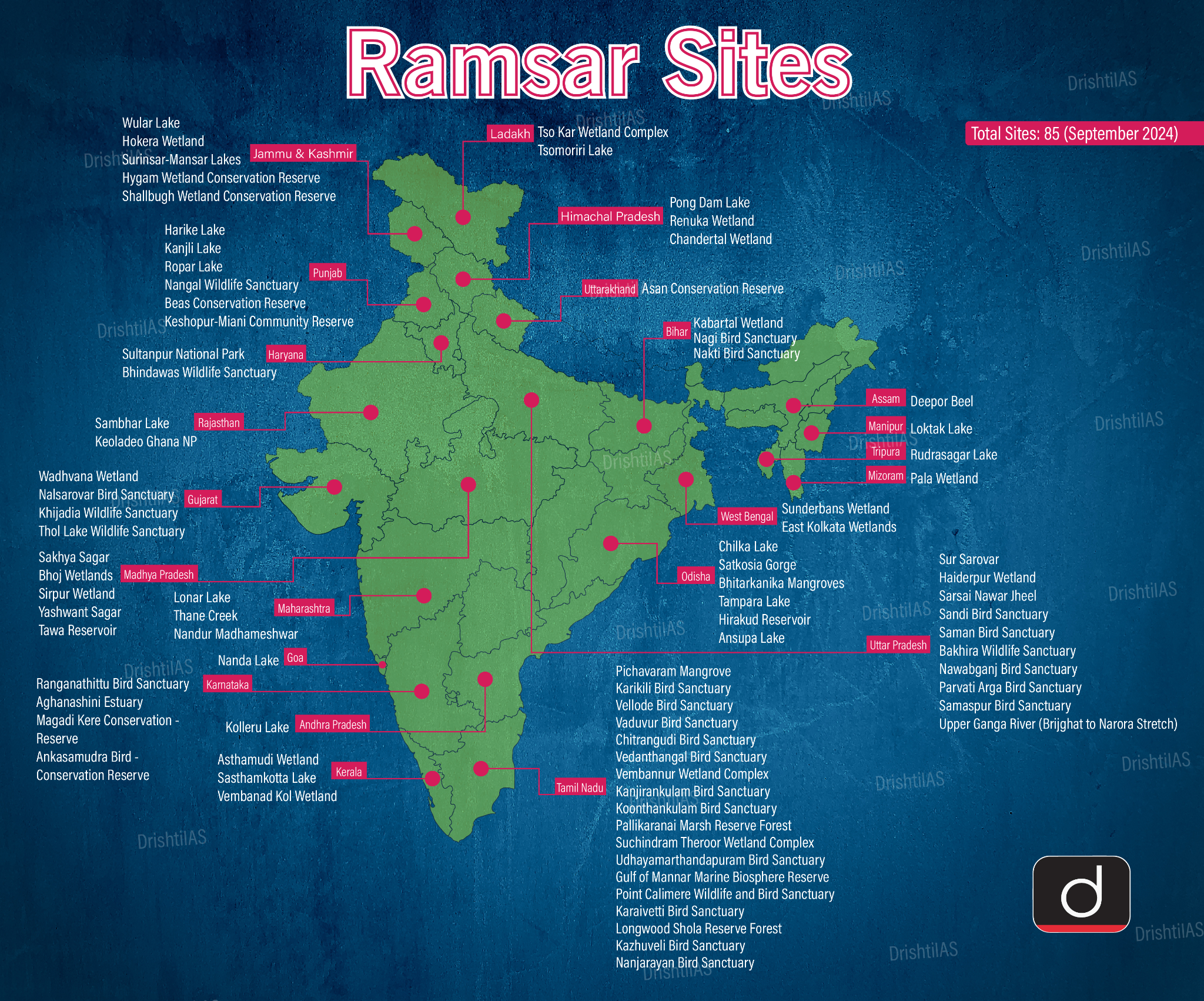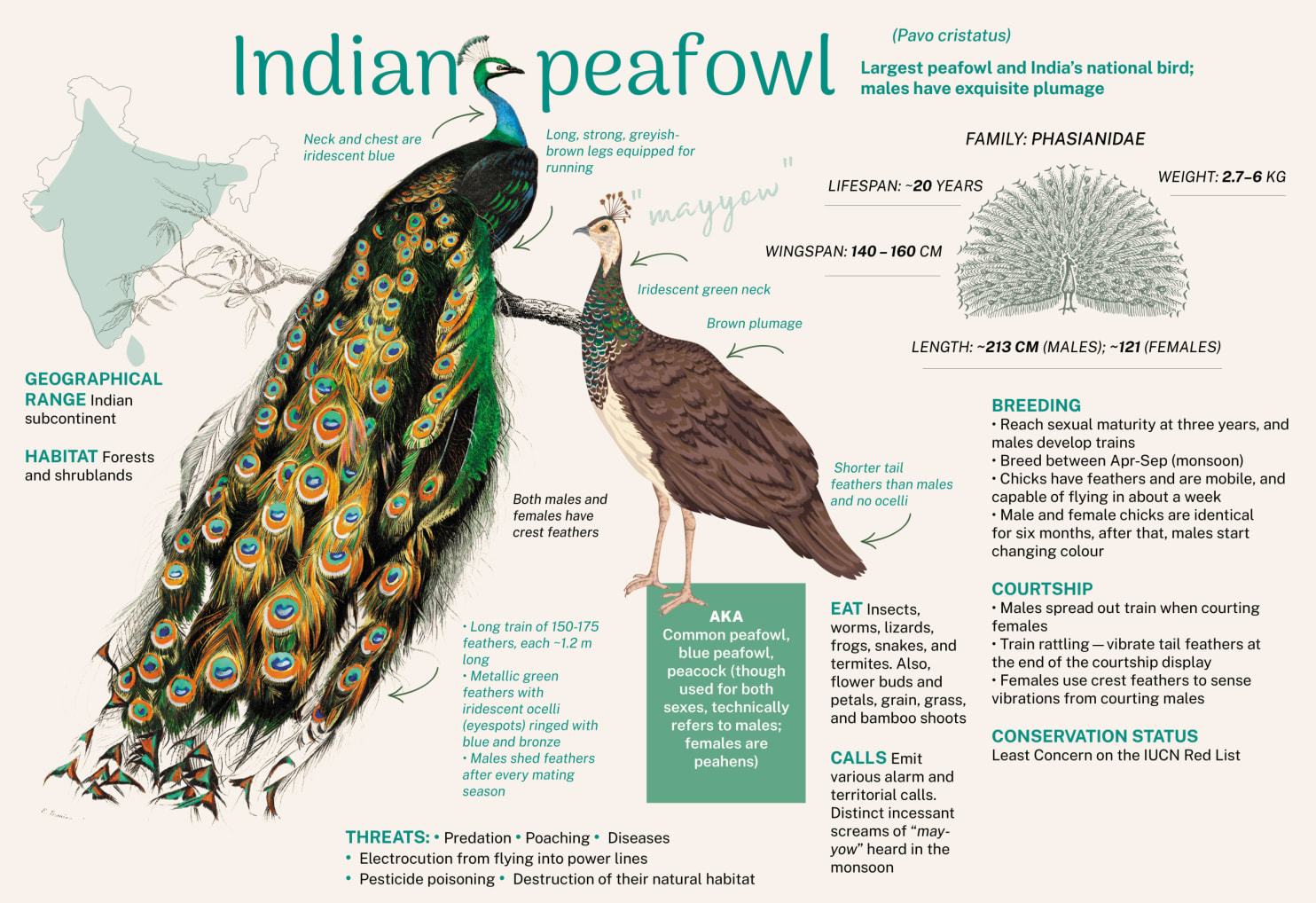Maps
Indian Economy
India's Trade Deficit as an Opportunity
For Prelims: Trade Deficit, GDP, Foreign Portfolio Investment (FPI), Capital Account, Current Account, Make in India, Budget Deficit, Balance of Payments, Micro, Small, and Medium Enterprises (MSMEs), PM GatiShakti National Master Plan, National Logistics Policy (NLP), Unified Logistics Interface Platform (ULIP), Logistics Data Bank, Global Value Chain, Production-Linked Incentive (PLI), Districts as Export Hubs.
For Mains: Benefits and challenges associated with the trade deficit.
Why in News?
According to some economists, India’s trade deficit is not a sign of weak manufacturing but reflects India’s strength in services and attractiveness as an investment destination.
What is the State of India’s Trade Deficit?
- About: A trade deficit occurs when a country imports more goods and services than it exports. It represents the amount by which the value of imports exceeds the value of exports over a certain period.
- India’s Trade Scenario:
- Overall Trade Deficit: Reduced from USD 121.6 billion (FY23) to USD 78.1 billion (FY24).
- Services Trade: Services exports stands at USD 339.62 in FY24 and Services Trade Surplus stands at USD 162.06 billion.
- India’s share in world services exports rose from 0.5% (1993) to 4.3% (2022), making India the 7th largest services exporter globally.
- Merchandise Trade: Merchandise exports stands at USD 776 billion (FY23). Merchandise Trade Deficit narrowed to USD 238.3 billion (FY24) from USD 264.9 billion (FY23).
- Current Account Deficit (CAD): Reduced to USD 23.2 billion (0.7% of GDP, FY24) from USD 67 billion (2% of GDP, FY23).
- Capital Account Balance: Net inflows rose from USD 58.9 billion (FY23) to USD 86.3 billion (FY24), driven by foreign portfolio investment (FPI).
Why is India's Trade Deficit not a Weakness?
- Strength in Services: India is a global leader in services and established a competitive advantage particularly IT and pharmaceuticals due to which it can afford to run a trade deficit in goods.
- The export surplus in services allows India to import more goods without destabilising its economy.
- Investment Destination: When India attracts foreign investment, it results in a capital account surplus, which is mathematically balanced by a current account deficit.
- Therefore, the current account deficit is a natural consequence of India’s strategy to attract investment.
- Competitive Exports: When a country runs a trade deficit, there is downward pressure on its currency, making it weaker relative to other currencies.
- A depreciated currency makes the country's exports cheaper and more competitive in foreign markets, potentially boosting export activity.
- Healthy Current Account Deficit: India has successfully maintained a modest current account deficit of around 2% of GDP, which is considered sustainable.
- This level of deficit does not pose an immediate risk to the country’s economic stability, as long as capital inflows match the deficit.
- Comparative Advantage: India’s trade deficit is not indicative of inefficiency in manufacturing but it is based on the principle of comparative advantage.
- Comparative advantage means India exports what it is best at (services) and imports goods where it has a lesser advantage in production.
- Manufacturing Growth: The current account deficit does not hinder the potential for greater manufacturing output.
- Machinery and engineering goods imported to support Make in India initiative drive further manufacturing expansion in the Indian economy.
- Higher Consumption Capacity: By importing goods and services, a country can provide its citizens with a wider range of products, including those that may not be locally available or are more expensive to produce domestically and raising living standards.
- Economic Flexibility: When domestic production is not sufficient to meet demand, imports can fill the gap, preventing economic disruptions and ensuring that consumers and businesses have access to the goods they need.
- Economic Integration: Trade deficits reflect global economic integration, enabling access to imports that support industries and consumers.
What are the Disadvantages of Trade Deficits?
- Loss of Economic Sovereignty: Persistent trade deficits allow foreign countries to buy domestic assets (opportunistic takeover), risking loss of control over key sectors and increasing vulnerability to external influences. E.g., Opportunistic takeover of Indian companies.
- Higher Unemployment: Persistent trade deficits in an open economy may lead to domestic businesses being unable to compete with cheaper imports, causing job losses and economic stagnation.
- Twin Deficits Hypothesis: Trade deficits are often linked to budget deficits, as a government may borrow to finance its economic needs when exports are insufficient to cover imports.
- Deindustrialization: Persistent deficits may lead to a decline in domestic manufacturing and industrial sectors, as domestic industries struggle to compete with cheaper or higher-quality imports.
- Balance of Payments Crisis: If trade deficits are financed by borrowing, a sudden loss of confidence from foreign investors can trigger a Balance of Payments crisis as happened in 1991 with India.
What Measures are Needed for a Balanced Trade?
- Export Credit Support: Encouraging banks to offer affordable and adequate export credit, especially for micro, small, and medium enterprises (MSMEs) to gain economies of scale and in competitiveness in foreign markets.
- Logistics Infrastructure: Leveraging initiatives like the PM GatiShakti National Master Plan and National Logistics Policy (NLP) to streamline operations, reduce costs, and enhance efficiency in the logistics sector to support domestic manufacturing at lower cost.
- NLP aims to reduce the logistics costs to 8% of the GDP by 2030 from the existing 13-14%.
- Free Trade Agreements (FTAs): Ensuring FTAs provide better terms for essential imports, enabling the country to meet domestic demand cost-effectively.
- GVC Participation: By joining Global Value Chain (GVCs), Indian firms can become part of international supply chains, gaining exposure to a broader customer base and increasing export volumes.
- Domestic Manufacturing: Expanding the Production-Linked Incentive (PLI) schemes and strengthening the Districts as Export Hubs (DEH) initiative can boost domestic manufacturing and exports and help reduce trade deficit.
- High Value Trade: Increasing exports of high-value goods and services can reduce India's trade deficit by generating more revenue per unit exported.
- E.g., companies like Tata Motors and Mahindra Electric can increase export of high-value electric vehicles (EVs), export of renewable energy technologies such as solar panels etc.
- Diversification of Export Basket: By expanding exports into sectors like defence equipment, aerospace, and renewable energy (solar panels, wind turbines), India can ensure more revenue generation and reduce trade deficit.
- Addressing Sanitary and Phytosanitary Barriers: By addressing barriers like pesticide residue limits, quarantine requirements, and animal health regulations, India can open up new markets in high income countries like the US and increase its exports which can help in addressing trade deficit.
|
Drishti Mains Question: Discuss the factors contributing to India’s trade deficit and suggest measures to address it. |
UPSC Civil Services, Previous Year Question (PYQ)
Prelims
Q. With reference to Balance of Payments, which of the following constitutes/constitute the Current Account? (2014)
- Balance of trade
- Foreign assets
- Balance of invisibles
- Special Drawing Rights
Select the correct answer using the code given below:
(a) 1 only
(b) 2 and 3
(c) 1 and 3
(d) 1, 2 and 4
Ans: (c)
Q. Which of the following constitute Capital Account? (2013)
- Foreign Loans
- Foreign Direct Investment
- Private Remittances
- Portfolio Investment
Select the correct answer using the codes given below:
(a) 1, 2 and 3
(b) 1, 2 and 4
(c) 2, 3 and 4
(d) 1, 3 and 4
Ans: (b)
Mains
Q. Craze for gold in Indians has led to surge in import of gold in recent years and put pressure on balance of payments and external value of rupee. In view of this, examine the merits of Gold Monetization scheme. (2015)


Geography
Global Decline in Freshwater Reserves
For Prelims: National Aeronautics and Space Administration, World Meteorological Organization, El Niño, Wetlands, Waterborne diseases, Artificial Intelligence, World Water Day, Atal Bhujal Yojana, Jal Shakti Abhiyan, Pradhan Mantri Krishi Sinchai Yojana, Desalination
For Mains: Climate Change and Water Scarcity, India’s Water Crisis, Freshwater Ecosystems and Biodiversity, Impact of Water Stress on Global Food Security.
Why in News?
Recent data from National Aeronautics and Space Administration (NASA)- German GRACE (Gravity Recovery and Climate Experiment) satellites reveal a significant decline in Earth's total freshwater levels since 2014.
Note:
The GRACE is a joint mission by NASA and Germany, its goal is to measure Earth's gravity field, using two identical satellites that orbit Earth about 220 km apart. These satellites track gravitational changes due to various geophysical processes like ocean currents, groundwater storage, ice sheet dynamics, and solid Earth movements such as earthquakes.
What is the Status of Decline in Freshwater Reserves?
- Global: Between 2015 and 2023, freshwater stored on land, including lakes, rivers, and groundwater, fell by 1,200 cubic kilometres.
- Half of the world’s countries have degraded freshwater systems, with over 400 river basins experiencing declining water flows, including iconic watersheds like the Congo Basin.
- The World Meteorological Organization reports that 2023 marked the driest year in over three decades for rivers globally, exacerbating the freshwater crisis.
- India: Home to 18% of the global population, India has just 4% of the world's freshwater resources and occupies only 2.4% of Earth's surface. Nearly half of its rivers are polluted, and over 150 primary reservoirs are at just 38% of their storage capacity, exacerbating the country’s severe water crisis.
- The 2018 Composite Water Management Index by NITI Aayog (National Institution for Transforming India) indicates that a significant portion of India's population faces high to extreme water stress, with approximately 600 million Indians experiencing water scarcity..
- Groundwater depletion is a major concern, especially in agrarian states like Punjab and Haryana, where overexploitation for irrigation and domestic use has caused water tables to drop significantly.
- Areas in central and western India, including Rajasthan, Maharashtra, and Gujarat, are frequently hit by droughts, further depleting already strained water reserves.
What are the Causes for the Decline in Freshwater Levels?
- Role of El Niño Events: The 2014-2016 El Niño event, one of the most significant since 1950, disrupted rainfall patterns globally.
- Warmer Pacific Ocean temperatures shifted atmospheric jet streams, intensifying drought conditions worldwide.
- Effects of Climate Change: Climate change has caused irregular and uneven rainfall patterns, resulting in prolonged dry spells, droughts, and erratic monsoon seasons.
- Intense precipitation events caused surface runoff instead of groundwater replenishment. Prolonged dry periods compact soil, reducing its water absorption capacity.
- Climate change amplifies evaporation and increases atmospheric water-holding capacity, worsening drought conditions.
- Droughts have significantly affected regions such as Brazil, Australasia, North America, Europe, and Africa.
- Over-extraction of Groundwater: Over-reliance on groundwater for irrigation, particularly in areas with inadequate rainfall, has led to its depletion, as extraction often exceeds natural replenishment.
- Additionally, industries and urban centres that depend on groundwater further exacerbate the depletion.
- Loss of Ecosystems: Destruction of natural ecosystems, such as wetlands and forests, reduces the ability of the land to retain water.
- The loss of forest cover leads to soil erosion, which reduces the ability of the land to absorb rainwater, further decreasing the replenishment of water bodies.
- Agricultural Practices and Pollution: Agriculture consumes 70% of the world’s accessible freshwater, but inefficient irrigation methods and the cultivation of water-intensive crops lead to significant water waste.
- Industrial waste and untreated wastewater also contribute to the pollution of water bodies, with long-term impacts on water quality and availability.
What are the Implications of Freshwater Decline?
- Impact on Biodiversity: The World Wildlife Fund (WWF) reports an 84% decline in freshwater species since 1970, driven by habitat loss, pollution, and migration barriers like dams.
- These factors destabilise ecosystems, threatening biodiversity and their essential services.
- Impact on Human Communities: The 2024 UN report on water stress highlights that reduced water availability strains farmers and communities, leading to famine, conflicts, poverty, and a higher risk of waterborne diseases.
- Water scarcity also hampers industries, affecting economic development and job creation. By 2025, 1.8 billion people may experience "absolute water scarcity," a crisis worsened by rapid population growth, inefficient water use, and poor governance.
- Urban areas are not immune to water stress. Many cities in India including Chennai, and Bengaluru, have faced severe water shortages in recent years, disrupting daily life and leading to increased costs for water transportation and management.
- Ecosystem Services: Freshwater ecosystems support nutrient cycling, boosting agricultural productivity. Wetlands also help mitigate flooding and enhance climate resilience.
- Their degradation threatens these vital services, reducing both environmental and community stability.
- Geopolitical Conflicts: Over 60% of global freshwater is shared by two or more countries. The decline in these resources, whether due to droughts, over-extraction, or pollution, can lead to disputes over water rights and usage.
- Water scarcity can worsen political tensions, as seen in the Nile River dispute between Egypt, Sudan, and Ethiopia.
- Ethiopia's construction of the Grand Ethiopian Renaissance Dam has raised concerns in Egypt over its water supply, potentially escalating into broader conflicts.
- Similarly, in India, disputes over river water sharing, such as those involving the Indus Water Treaty (IWT) with Pakistan and the inter-state conflicts over the Cauvery and Krishna rivers,have led to ongoing conflicts between states.
- Water scarcity can worsen political tensions, as seen in the Nile River dispute between Egypt, Sudan, and Ethiopia.
- Science and Technology: The decline in freshwater resources impacts Artificial Intelligence (AI) systems, which rely on water for cooling data centres.
- By 2027, AI is estimated to consume 4.2 to 6.6 billion cubic metres of water annually, increasing pressure on already limited water supplies.
What are the Initiatives Related to Water Conservation?
- Global:
- World Water Day
- Water Credit
- Water Action Agenda: Launched at the United Nations 2023 Water Conference, includes over 830 voluntary commitments from the global water community to fast-track progress towards Sustainable Development Goal 6(ensuring universal access to water and sanitation by 2030).
- India:
- National Water Policy (2012)
- Atal Bhujal Yojana
- Jal Shakti Abhiyan
- Pradhan Mantri Krishi Sinchai Yojana
- Mission Amrit Sarovar
- National Aquifer Mapping (NAQUIM)
- Bhu-Neer Portal: It aims to improve groundwater regulation across India. It provides a centralised platform for accessing information on groundwater laws, regulations, and sustainable practices.
Way Forward
- Policy Reorientation: Countries need to treat water as a common good, reorienting public policies on water pricing, subsidies, and procurement to encourage conservation, especially among heavy water users.
- Ensuring vulnerable communities have access to clean water and sanitation is critical to addressing water-related inequalities.
- Rainwater Harvesting: Rainwater harvesting systems, both large and small, offer a practical solution to supplement freshwater supplies, particularly in water-scarce regions.
- Optimise Desalination: Desalination, though energy-intensive and costly, provides a solution to water scarcity in coastal areas.
- Energy-efficient technologies like reverse osmosis should be optimized to reduce costs and environmental impacts. Additionally, nanotechnology-based devices can be developed for efficient water purification with less energy-intensive processes.
- Infrastructure Development: Optimising infrastructure like dams, stepwells, reservoirs, and aqueducts can improve water storage and distribution, but careful planning is needed to avoid environmental and social issues.
- New dam projects should prioritise ecological restoration, sediment management, and equitable water distribution.
- Bottled Water Alternatives: Sustainable alternatives like water filters and refillable containers should be promoted to reduce bottled water demand and encourage eco-friendly consumption.
|
Drishti Mains Question: Examine how climate change contributes to freshwater scarcity and suggest measures society should adopt to mitigate its impact on water resources. |
UPSC Civil Services Examination, Previous Year Question (PYQ)
Prelims
Q.1 Which one of the following ancient towns is well known for its elaborate system of water harvesting and management by building a series of dams and channelizing water into connected reservoirs? (2021)
(a) Dholavira
(b) Kalibangan
(c) Rakhigarhi
(d) Ropar
Ans: (a)
Q.2 With reference to ‘Water Credit’, consider the following statements: (2021)
- It puts microfinance tools to work in the water and sanitation sector.
- It is a global initiative launched under the aegis of the World Health Organization and the World Bank.
- It aims to enable the poor people to meet their water needs without depending on subsidies.
Which of the statements given above are correct?
(a) 1 and 2 only
(b) 2 and 3 only
(c) 1 and 3 only
(d) 1, 2 and 3
Ans: (c)
Mains
Q.1 What are the salient features of the Jal Shakti Abhiyan launched by the Government of India for water conservation and water security? (2020)
Q.2 Suggest measures to improve water storage and irrigation system to make its judicious use under the depleting scenario. (2020)
International Relations
G20 Rio de Janeiro Leaders’ Declaration
For Prelims: G20, UN Security Council, Digital Public Infrastructure (DPI), Sustainable Fuel, Land Degradation, Global Alliance against Hunger and Poverty, Paris Agreement, Mission LiFE, International Solar Alliance, One Sun One World One Grid, Global Biofuel Alliance, Waste-to-Energy, Coalition for Disaster Resilient Infrastructure, Small Island Developing States (SIDS), Global Development Compact (GDC), 3rd Voice of the Global South Summit 2024.
For Mains: Role of multilateral institutions like G20 in solving global problems and promoting sustainable development.
Why in News?
Recently, the G20 Leaders convened in Rio de Janeiro, Brazil for the 19th G20 Summit reaffirming the G20's commitment of advancing a sustainable and inclusive world under the theme "Building a Just World and a Sustainable Planet."
- Additionally, India’s Prime Minister (PM) addressed the G20 session on Sustainable Development and Energy Transition.
- South Africa will host the G20 in 2025, followed by the United States of America in 2026.
What are the Key Outcomes of the G20 Rio de Janeiro Leaders’ Declaration?
- Taxing the Super-Rich: The declaration advocates for progressive and effective taxation of the super-rich.
- Respect for fiscal sovereignty is emphasised while promoting international cooperation on tax principles.
- Multilateralism: The declaration emphasised better representation of underrepresented regions such as Africa, Latin America, and Asia-Pacific in the UN Security Council.
- G20 launched the Global Alliance against Hunger and Poverty, targeting 500 million people with cash transfers and 150 million children with school meals by 2030.
- Social Inclusion and Digital Divide: Leaders committed to promoting equal participation of both men and women in paid and unpaid care work, encouraging involvement of both the gender.
- G20 countries reaffirmed their commitment to bridge digital divides, including halving the gender digital divide by 2030.
- India, Brazil and South Africa unveiled a joint declaration on Digital Public Infrastructure (DPI) for inclusive digital transformation.
- Climate Action: Leaders emphasised inclusive, technology-neutral approaches for low-emission energy, and welcomed a Global Climate Change Mobilisation Task Force.
- It reaffirmed the G20 ambition to reduce land degradation by 50% by 2040 on a voluntary basis, as committed under the G20 Land Initiative.
- Global Trade: G20 countries agreed to avoid discriminatory green economic policies, consistent with WTO rules and multilateral environmental agreements.
- Global Health: G20 countries welcomed the Coalition for Local and Regional Production to enhance equitable access to vaccines, therapeutics, and health technologies.
Digital Public Infrastructure
- About: Digital public infrastructure (DPI) is a set of digital systems that enables countries to safely and efficiently provide economic opportunities and deliver social services.
- Coverage: DPI spans the entire economy, connecting people, data, and money in much the same way that roads and railways connect people and goods.
- DPI Ecosystem: People, data, and money make the foundation of an effective DPI ecosystem:
- First, the flow of people through a digital ID System.
- Second, the flow of money through a real-time fast payment system.
- And third, the flow of personal information through a consent-based data sharing system to actualise the benefits of DPIs and to empower the citizen with a real ability to control data.
Note:
Health Ministers from the powerful G20 nations have resolved to set up a Coalition for Local and Regional Production to promote more equitable access to “safe, affordable, quality and effective health products and technologies”.
What Are India’s Sectoral Progress Highlighted in the G20 Rio Declaration?
- Inclusivity and SDGs: Over 4 crore families have received homes, 12 crore homes now have access to clean water, 10 crore families have been provided clean cooking fuel, and over 11.5 crore families have new toilets between 2014 and 2024.
- Paris Agreement Target: India is the first G20 country to have fulfilled the commitments made under the Paris Agreement ahead of time.
- India has already achieved its target of 40% installed electric capacity from non-fossil fuels in November 2021 itself.
- Under India's new target of 500 GW of renewable energy by 2030, 200 GW has been achieved.
- Green Transition: India is driving a global green transition with Mission LiFE to promote sustainable lifestyles and initiatives like One Sun One World One Grid and the International Solar Alliance to enhance global energy connectivity and expand renewable energy networks.
- Circular Economy: India has launched the Global Biofuel Alliance and is running a waste-to-energy campaign in India aimed at minimising waste and making the most of resources.
- Disaster Resilience: India has launched the Coalition for Disaster Resilient Infrastructure, focusing on both preemptive measures and post-disaster recovery, to build resilient infrastructures in the face of climate challenges.
- Support for the Global South: India recognises the need for affordable and reliable climate finance for energy transitions in the Global South, particularly for Small Island Developing States (SIDS).
- India commits to sharing sustainable development experiences with the Global South through Global Development Compact (GDC) launched at the 3rd Voice of the Global South Summit 2024.
- GDC focuses on trade, sustainable growth, technology sharing, and concessional financing within India's growth framework.
What is Significance of G20 in Current Global Order?
- Global Economic Influence: The G20 nations collectively represent over 85% of global economic output, around 75% of global exports, and about 80% of the world’s population.
- It offers a more diverse and accurate representation of the world’s economy than older blocs like the G7.
- Crisis Management: The G20 was instrumental in responding to the global financial crisis of 2008-2009, where its member states agreed to spending measures worth USD 4 trillion which helped stabilise the global economy and prevent a deeper recession.
- More recently, the G20’s role was crucial in addressing the economic fallout of the Covid-19 pandemic.
- Geopolitical Representation: It includes influential democratic nations such as India and Brazil, as well as autocracies like China, Russia, and Saudi Arabia which allows for a broader perspective on global issues.
- The inclusion of the African Union brought in voices from a continent with over 1.3 billion people and an economy worth USD 3.1 trillion.
- Climate Change: The G20 countries account for over 80% of global carbon emissions. This makes the group indispensable in any global effort to mitigate climate change.
Conclusion
The G20 Rio de Janeiro Leaders’ Declaration and India's Prime Minister's address highlight global commitments to sustainable development, climate action, and energy transitions. India’s proactive initiatives, such as fulfilling Paris Agreement targets and promoting green transitions, underline its leadership in fostering a just, sustainable, and inclusive future for all nations.
|
Drishti Mains Question: Q. Assess the role of G20 countries in addressing global challenges. |
UPSC Civil Services Examination Previous Year’s Questions (PYQs)
Prelims
Q. In which one of the following groups are all the four countries members of G20? (2020)
(a) Argentina, Mexico, South Africa and Turkey
(b) Australia, Canada, Malaysia and New Zealand
(c) Brazil, Iran, Saudi Arabia and Vietnam
(d) Indonesia, Japan, Singapore and South Korea
Ans: (a)


Biodiversity & Environment
Carbon Credits
For Prelims: Carbon credits, Carbon markets, Hydrofluorocarbon, Paris Agreement, Kyoto Protocol, Greenhouse gases, Greenwashing
For Mains: Carbon Markets and Their Effectiveness, Environmental Integrity and Greenwashing in Carbon Markets, Carbon Credit Market in India
Why in News?
A recent study in Nature journal reveals that only 16% of carbon credits result in actual emissions reductions, casting doubt on the effectiveness of carbon markets.
- As the 29th Conference of the Parties to the United Nations Framework Convention on Climate Change (COP29) prioritizes new carbon trading mechanisms, this study raises critical concerns about the reliability of emissions reduction claims.
What are the Key Highlights of the Study?
- Ineffectiveness of Carbon Credits: The study analyzed projects generating carbon credits equivalent to one billion tonnes of Carbon dioxide(CO2) under Kyoto Protocol, 1997 mechanisms, and revealed that only 16% of these credits corresponded to actual emissions reductions.
- HFC-23 Abatement Success: The most effective emissions reductions were observed in projects focused on the elimination of Hydrofluorocarbon (HFC)-23, a potent greenhouse gas.
- Around 68% of credits from these projects resulted in actual emissions cuts, making them the most successful among the projects reviewed.
- Challenges with Other Projects: Avoided deforestation projects only resulted in a 25% effectiveness rate.
- An "avoided deforestation project" is a conservation effort that protects forests from being cleared, preventing the release of CO2 that would occur if the trees were cut down.
- Solar cooker deployment projects showed even lower effectiveness, with just 11% of credits leading to emissions reductions.
- Flaws in Assessing Additionality: The study found that many projects under the Kyoto Protocol failed the "additionality" rule, meaning emissions reductions could have occurred without the revenue from carbon credits.
- Additionality requires projects to reduce emissions beyond what would have happened in a business-as-usual scenario.
- The study highlighted flaws in current assessments, with many Kyoto mechanisms issuing credits for non-additional reductions, undermining emission claims.
- These issues emphasise the need for more robust carbon trade mechanisms under the Paris Agreement, 2015 with progress expected at COP29 in Baku.
- Recommendations: The study calls for stricter eligibility criteria and improved standards and methodologies to quantify emission reductions.
- Projects with a high likelihood of additionality should be prioritised.
- The study stresses the need for robust carbon trading mechanisms under the Paris Agreement, with safeguards to ensure credits reflect real emissions reductions.
What are Carbon Credits?
- About: Carbon credits, or carbon offsets, refer to carbon emissions reductions or removals, measured in tonnes of carbon dioxide equivalent (tCO2e).
- The concept of carbon credit, introduced in the Kyoto Protocol, 1997 and reinforced by the Paris Agreement, 2015 aims to reduce greenhouse gases (GHG) emissions through carbon trading.
- Each carbon credit permits the emission of one tonne of CO₂ or its equivalent.
- These credits are generated by projects that absorb or reduce carbon emissions and are certified by international bodies like the Verified Carbon Standard (VCS) and the Gold Standard.
- The concept of carbon credit, introduced in the Kyoto Protocol, 1997 and reinforced by the Paris Agreement, 2015 aims to reduce greenhouse gases (GHG) emissions through carbon trading.
- Carbon Markets: The carbon markets established under the Paris Agreement aim to create more robust, reliable systems for trading carbon credits and ensuring transparency in emissions reductions.
- Under Article 6 of the Paris Agreement, countries can work together, transferring carbon credits from emission-reducing projects to help other countries meet their climate goals.
- Types of Carbon Markets:
- Compliance Markets: Established through national or regional emissions trading schemes (ETS), where participants are legally obligated to meet specific emission reduction targets.
- These markets are driven by regulatory frameworks and impose penalties for non-compliance.
- Participants include governments, industries, and businesses, all of whom must meet emissions limits set by the authorities.
- Voluntary Markets: In voluntary carbon markets, there is no formal obligation to reduce emissions.
- Participants, such as companies, cities, or regions, voluntarily engage in carbon trading to offset their emissions and meet sustainability goals, such as achieving climate neutrality or net-zero emissions.
- This is often done as part of corporate social responsibility (CSR) initiatives or to gain a market advantage by showcasing environmental responsibility.
- Compliance Markets: Established through national or regional emissions trading schemes (ETS), where participants are legally obligated to meet specific emission reduction targets.
- Benefits of Carbon Credits: Projects that aim at forest protection or sustainable land management can preserve critical habitats , animal and plant species, and promote ecosystem services. Carbon credits can also play a role in financing sustainable projects .
What are the Concerns Regarding Carbon Credits?
- Non-Adherence to Additionality: Carbon credits should only be given for projects that achieve emissions reductions beyond what would have happened naturally. This concept is known as additionality, a core principle of Carbon Credits.
- Due to lack of clear additionality rules, credits are given to projects that would have reduced the same amount of emissions anyway, making the carbon market less effective.
- Greenwashing: Some companies claim carbon credits as a way to appear environmentally responsible without making substantial changes to their operations, a practice known as greenwashing.
- This undermines the credibility of the carbon credit market and can mislead consumers and investors about the actual environmental impact.
- Market Transparency: Lack of transparency in how carbon credits are generated and traded can raise doubts about the legitimacy of the market.
- Lack of real-time tracking and independent audits weakens the system's integrity, leading to issues like double-counting emissions reductions.
- Inequitable Access: Developing countries may face barriers in accessing resources or technology to participate in carbon credit generation, limiting their ability to benefit from the market. This can perpetuate inequalities in the global climate effort.
- Key Challenges Facing India’s Carbon Credit Market:
- Industry Readiness & Compliance Costs: The high cost of monitoring and verification systems limits smaller projects in India, especially Micro, Small and Medium Enterprises (MSMEs), which generate around 110 million tonnes of CO2 annually, hindering their participation in the carbon market.
- Regulatory and Oversight Mechanisms: India’s carbon market, while still in its early stages, requires strong enforcement and an alignment with both domestic and international standards to be effective.
India’s Initiatives Related to Carbon Credit
- Nationally Determined Contributions (NDCs): India updated its NDCs in 2023 to include the establishment of a domestic carbon market.
- Energy Conservation (Amendment) Act, 2022: Provides the legal framework for the Carbon Credit Trading Scheme (CCTS). It empowers the Indian government to establish a domestic carbon market and to authorise designated agencies to issue carbon credit certificates (CCCs).
- The CCTS is a unified Indian Carbon Market (ICM) established to reduce GHG emissions through the trading of carbon credit certificates.
- Perform, Achieve and Trade (PAT) scheme
- Renewable Energy Certificates (REC)
- Green Credit Programme.
- Monitoring and Verification: The Bureau of Energy Efficiency (BEE) and the National Steering Committee for Indian Carbon Market (NSCICM) are responsible for ensuring the integrity of the carbon credits through rigorous monitoring, reporting, and verification processes.
Way Forward
- Strengthen Additionality: Implement stringent additionality criteria to ensure credits represent genuine emissions reductions.
- Ensure transparency through real-time tracking and third-party verification.
- Focus on Proven, High-Impact Projects: Prioritise projects like HFC-23 abatement that have demonstrated high emissions reduction effectiveness. Avoid low-impact projects with poor success rates.
- Establish Robust MRV Systems: Invest in scalable monitoring, reporting, and verification (MRV) systems, especially for smaller projects. Collaborate with international standards like VCS or Gold Standard to ensure credibility.
- Align with International Standards: Ensure compliance with Article 6 of the Paris Agreement and integrate global carbon market standards.
- Provide financial and technical support to developing regions to participate effectively in carbon markets.
|
Drishti Mains Question: Evaluate the concept of carbon markets. How do flaws in additionality impact the integrity of carbon credit systems?" |
UPSC Civil Services Examination, Previous Year Question (PYQ)
Prelims
Q. Consider the following statements (2023)
Statement—I: Carbon markets are likely to be one of the most widespread tools in the fight against climate change.
Statement—II: Carbon markets transfer resources from the private sector to the State.
Which one of the following is correct in respect of the above statements?
(a) Both Statement—I and Statement—II are correct and Statement—II is the correct explanation for Statement—I
(b) Both Statement—I and Statement—II are correct and Statement—II is not the correct explanation for Statement—I
(c) Statement—I is correct but Statement—II is incorrect
(d) Statement—I is incorrect but Statement—II is correct
Ans: B
Q. The concept of carbon credit originated from which one of the following? (2009)
(a) Earth Summit, Rio de Janeiro
(b) Kyoto Protocol
(c) Montreal Protocol
(d) G-8 Summit, Heiligendamm
Ans: B


International Relations
2nd India-Australia Annual Summit
For Prelims: G20,Green hydrogen, Ind-Aus ECTA, Make in India, United Nations Convention on the Law of the Sea, Indian Ocean Rim Association, AUSINDEX, Pitch Black, Asia-Pacific Economic Cooperation.
For Mains: India and Australia Relations, India-Australia Critical Minerals Investment Partnership, Significance, India Australia Summit.
Why in News?
The Prime Minister of India and the Prime Minister of Australia held the 2nd India-Australia Annual Summit on the sidelines of the 2024 Group of 20 (G20) Summit in Rio de Janeiro, Brazil.
- Ahead of the fifth anniversary of the India-Australia Comprehensive Strategic Partnership in 2025, the Prime Ministers highlighted significant progress in areas including climate change, trade, defence, education, and regional cooperation.
What are the Key Highlights of the India-Australia 2nd Annual Summit?
- Renewable Energy Partnership: The India-Australia Renewable Energy Partnership (REP) was launched to bolster cooperation in solar energy, green hydrogen, and energy storage.
- Trade and Investments: Committed to developing a Comprehensive Economic Cooperation Agreement (CECA), building on the success of the India-Australia Economic Cooperation and Trade Agreement (Ind-Aus ECTA), which led to a 40% increase in mutual trade within two years.
- The Prime Ministers highlighted the complementarity between 'Make in India' and 'Future Made in Australia,' emphasising their potential to create jobs, drive economic growth, and secure future prosperity.
- Both Nations welcomed the extension of the Australia-India Business Exchange (AIBX) programme for another four years from July 2024.
- The AIBX is a 4-year program aimed at boosting trade and investment between India and Australia by providing market insights and fostering commercial partnerships.
- Enhanced Mobility: Both nations recognized mobility between Australia and India as key to economic growth, they welcomed the launch of Australia’s Working Holiday Maker visa programme for India in October 2024.
- They also looked forward to the commencement of Australia’s Mobility Arrangement for Talented Early-professionals Scheme (MATES), aimed at promoting mobility of early professionals and providing Australian industry access to India’s top STEM (science, technology, engineering, and mathematics) graduates.
- Strategic Collaboration: The leaders agreed to renew the Joint Declaration on Defence and Security Cooperation(JDSC) in 2025, reflecting their enhanced defence partnership and strategic convergence.
- The JDSC,agreed in 2007, aimed to strengthen cooperation in areas such as counter-terrorism, disarmament, non-proliferation, and maritime security.
- Regional and Multilateral Cooperation: Both nations reiterated their support for a free, open, and inclusive Indo-Pacific, consistent with the United Nations Convention on the Law of the Sea (UNCLOS).
- They pledged continued collaboration under the Quad framework, emphasizing areas like pandemic response, cybersecurity, and critical infrastructure.
- The 2024 Indian Ocean Conference in Perth and India’s upcoming Indian Ocean Rim Association (IORA) Chairmanship in 2025 underscore mutual efforts in maritime ecology and sustainable development.
- Both nations reaffirmed commitments to supporting Pacific island countries through Forum for India-Pacific Islands Cooperation (FIPIC) framework.
Note:
The 1st Annual Summit was held in 2023 in New Delhi, the Prime Ministers reaffirmed their support for strengthening the India-Australia Comprehensive Strategic Partnership.
What is the India-Australia Comprehensive Strategic Partnership?
- About: In June 2020, India and Australia elevated their relationship from a 'Strategic Partnership' signed in 2009 to a 'Comprehensive Strategic Partnership' (CSP) to strengthen bilateral ties.
- It is grounded in mutual trust, shared democratic values, and common interests in areas like regional security, economic growth, and global cooperation.
- Key Features of the CSP:
- Science, Technology & Research Collaboration: Enhanced cooperation on medical research, technology, and cyber security.
- Maritime Cooperation: Joint efforts to ensure a free, open, and inclusive Indo-Pacific, with a focus on sustainable maritime resources and combating illegal fishing.
- Defence: Expanding military cooperation by conducting joint exercises like the "Malabar" exercise and providing logistics support through agreements such as the Mutual Logistics Support Agreement (MLSA) to address common security challenges.
- Economic Cooperation: Re-engaging on a Comprehensive Economic Cooperation Agreement (CECA), encouraging trade, investment, and collaboration in infrastructure, education, and innovation.
- Implementation: The CSP includes regular dialogues at various levels, including foreign and defence ministers meeting in a '2+2' format, Annual summits and ministerial meetings are intended to ensure continued cooperation.
Ind-Aus ECTA
- The Ind-Aus ECTA signed in 2022, aimed to boost trade between the two nations. It granted India preferential access to 100% of Australia's tariff lines, covering key sectors like gems, textiles, leather, and agriculture.
- In return, India offered preferential access to over 70% of its tariff lines, including raw materials like coal and minerals, benefiting both countries' trade interests.
What are the Key Milestones in India-Australia Relations?
- Bilateral Trade: India is Australia's 5th largest trading partner with two-way trade in goods and services valued at USD 49.1 billion in 2023.
- India's Exports to Australia: Refined petroleum, Pearls and gems, Jewellery, and Made-up textile articles.
- Australia's Exports to India: Coal, Copper ores and concentrates, Natural gas, Non-ferrous/Ferrous waste and scrap, and Education-related services.
- Civil Nuclear Cooperation: In 2014, India and Australia signed the Civil Nuclear Cooperation Agreement, allowing uranium exports to India.
- The agreement came into force in 2015, facilitating the supply of uranium for India's peaceful nuclear energy needs.
- Defence and Security Cooperation: India-Australia defence ties are strengthened through joint exercises like AUSINDEX, Pitch Black, and initiatives like the 2022 General Rawat Exchange Programme, a military exchange program.
- India and Australia have signed an agreement allowing the Royal Australian Air Force (RAAF) to refuel Indian aircraft near Australian airspace. This aims to enhance interoperability and boost operational reach in the Indo-Pacific region.
- Under this agreement, the RAAF’s KC-30A will refuel India’s P-8I surveillance aircraft, strengthening defence ties and regional security.
- India and Australia have signed an agreement allowing the Royal Australian Air Force (RAAF) to refuel Indian aircraft near Australian airspace. This aims to enhance interoperability and boost operational reach in the Indo-Pacific region.
- Multilateral Engagement: Active participation in Quad initiatives, IORA, and the International Solar Alliance (ISA).
- Australia supports India's candidature for a permanent seat in the United Nation Security Council and membership in the Asia-Pacific Economic Cooperation.
Conclusion
India and Australia have made notable progress in strengthening their economic and strategic ties, driven by shared democratic values. Despite challenges like delay in developing CECA, and evolving regional security, both nations remain committed to deepening their partnership. With continued cooperation, they are well-positioned to enhance ties in the future.
|
Drishti Mains Question: Evaluate the evolution of India- Australia trade relations in the context of shifting global dynamics. |
UPSC Civil Services Examination, Previous Year Questions (PYQs)
Prelims
Q.1 Consider the following countries: (2018)
- Australia
- Canada
- China
- India
- Japan
- USA
Which of the above are among the ‘free-trade partners’ of ASEAN?
(a) 1, 2, 4 and 5
(b) 3, 4, 5 and 6
(c) 1, 3, 4 and 5
(d) 2, 3, 4 and 6
Ans: (c)
- The Association of Southeast Asian Nations (ASEAN) has free trade agreements with six partners, namely the People’s Republic of China, Republic of Korea, Japan, India as well as Australia and New Zealand.


Important Facts For Prelims
Anti-Personnel Landmines Convention
Why in News?
Recently, the United States has approved sending anti-personnel landmines to Ukraine which are banned under the Anti-Personnel Landmines Convention, 1997.
- In another development, the US has supplied the Army Tactical Missile System (ATACMS) to Ukraine which can hit targets inside Russian territory.
What is Anti-Personnel Landmines Convention,1997?
- About: It is an international agreement that aims to eliminate the use, production, stockpiling, and transfer of anti-personnel landmines.
- It is commonly referred to as the Ottawa Convention or Anti-Personnel Mine Ban Treaty.
- Adoption: It was concluded by the Diplomatic Conference on an International Total Ban on Anti-Personnel LandMines at Oslo on 18th September 1997 and entered into force on 1st March 1999.
- Scope: It prohibits anti-personnel mines but does not cover anti-vehicle mines.
- Membership: The Convention is signed by 133 States. Today it has 164 States parties.
- The US, Russia and India are not party to the convention. Ukraine is a signatory.
Anti-Personnel Landmines
- Landmines are explosives that are concealed on the ground and are designed to detonate when enemy forces pass over or near them.
- Anti-personnel mines are built to hurt enemy troops while anti-tank mines are built to destroy armoured vehicles.
Note:
ATACMS is a surface-to-surface ballistic missile designed to strike targets at a range of up to 300 km. It is powered by solid rocket propellant and follows a ballistic trajectory.
- Ballistic trajectories are used to describe the paths of projectiles like missiles or artillery shells that are launched and then fall to their targets due to gravity.
UPSC Civil Services Examination Previous Year’s Questions (PYQs)
Prelims
Q. Which one of the following is used as an explosive?(2009)
(a) Phosphorus trichloride
(b) Mercuric oxide
(c) Graphite
(d) Nitroglycerine
Ans: (d)


Important Facts For Prelims
Avian Botulism at Sambhar Lake
Why in News?
Recently, a mass death of migratory birds died at Sambhar Lake in Rajasthan, likely due to avian botulism. The outbreak is believed to be caused by high temperatures and reduced salinity in the lake.
What is Avian Botulism?
- Definition: Avian botulism is a neuromuscular disease caused by toxins produced by the bacterium Clostridium botulinum. The disease affects wild birds, primarily waterfowl and fish-eating birds, causing paralysis and death.
- Environmental Conditions: Avian botulism outbreaks are triggered by specific environmental factors, including:
- High water temperatures.
- Low oxygen levels in water.
- Stagnant or sub-optimal water conditions.
- Transmission: Botulism outbreaks occur when invertebrates or fish ingest the bacteria and die in poor water conditions. The bacteria multiply in the carcasses, producing toxins that affect waterfowl and fish-eating birds.
- Scavengers, including other birds and mammals, can also ingest the toxin from the carcasses.
- Symptoms in Birds: Muscle weakness, paralysis and difficulty flying or standing. Affected birds may lose the ability to hold their heads up.
- Disease Management: There is no treatment for this disease. Control of avian botulism is challenging due to the natural presence of Clostridium botulinum in the environment.
- However, removing and properly disposing of carcasses helps limit toxin spread. Water level management in smaller lakes can reduce outbreaks.
- Public Health Concerns: Clostridium botulinum has seven types (A-G), with types C and E affecting wild birds.
- Botulism in humans is usually caused by type A or B toxins from improperly canned food.
- Type C doesn't impact humans, but type E can be contracted from infected fish, though proper cooking can inactivate the toxin.
- Precautions, like wearing gloves and washing hands, should be taken when handling dead birds or fish to prevent contamination.
- Factors Triggering Botulism at Sambhar Lake: High temperatures in Jaipur (1-5.1°C above normal) in October, reduced salinity from freshwater inflow, and a lack of rainfall contributed to low oxygen levels in Sambhar Lake, creating ideal conditions for Clostridium botulinum growth.
Sambhar Lake
- Sambhar Lake, India’s largest saline wetland, is located in the Nagaur and Jaipur districts of Rajasthan, bordered by the Aravalli hills. It is the source of most of Rajasthan's salt production.
- It was designated a Ramsar site in 1990 due to its ecological significance.
- It attracts thousands of migratory birds, including flamingos, from November to February. During the monsoon, the lake comes alive with birds like coots, black-winged stilts, sandpipers, and redshanks.


Rapid Fire
Guided Pinaka Weapon System
Recently, the Defence Research and Development Organisation (DRDO) successfully completed the Flight Tests of the Guided Pinaka Weapon System as part of Provisional Staff Qualitative Requirements (PSQR) Validation Trials.
- The PSQR parameters include range, accuracy, consistency, and the ability to fire multiple rockets simultaneously in salvo mode.
- Guided Pinaka Missile System: It is a multi-barrel rocket launcher system, designed by the Armament Research and Development Establishment (ARDE), a laboratory of the DRDO.
- Named after Lord Shiva’s bow, Pinaka is a versatile and high-precision rocket system.
- Key Features: Renowned for its mobility, rapid response, and capability to deliver concentrated firepower on enemy targets.
- The initial version of the weapon system was called Mark I, which had a range of 40 km.
- The upgraded version or Pinaka Mark II has an extended range of 70 to 80 km, with plans to reach 120 km and 300 km in the future.
- Tested successfully from upgraded launchers, firing 12 rockets per salvo.
- The initial version of the weapon system was called Mark I, which had a range of 40 km.
Read more: Pinaka Missile System - Drishti IAS


Rapid Fire
WAVES OTT Platform of Prasar Bharati
Recently, Prasar Bharati launched its OTT (Over-the-Top) platform WAVES, to cater to India’s increasing demand for digital streaming services.
- WAVES:
- It offers a variety of content, including live TV, video on demand, radio streaming, games, and e-commerce via the ONDC network.
- It provides access to 65 live channels, covering genres like infotainment, news, and culture.
- The platform is free to download, with most content available at no cost, while premium features are available through subscription plans.
- It offers a variety of content, including live TV, video on demand, radio streaming, games, and e-commerce via the ONDC network.
- OTT and Its Regulation:
- OTT refers to streaming services delivering content via the internet, bypassing traditional broadcast methods.
- The OTT platforms are regulated by the Ministry of Information and Broadcasting, ensuring content compliance and accountability.
- In 2022, the Central Government introduced the Information Technology (Intermediary Guidelines and Digital Media Ethics Code) Rules 2021 to regulate OTT platforms.
Read More: Over the Top Platform in India


Rapid Fire
Salt Chimneys in the Dead Sea
Recently, researchers discovered unique salt chimneys on the Dead Sea floor, formed by highly saline groundwater.
- Salt chimney: These are vertical mineral structures formed by saline groundwater rising through the Dead Sea, crystallising salt upon contact.
- These chimneys are created by the upward flow of hypersaline brine from aquifers, which crystallizes upon contact with the Dead Sea's water.
- Hypersaline brine is highly concentrated saltwater, denser than freshwater, formed from dissolved minerals in groundwater, often leading to crystallisation.
- The chimneys grow rapidly and are significant as early indicators of sinkhole risks, providing clues to areas prone to karstification and ground collapse.
- These chimneys are created by the upward flow of hypersaline brine from aquifers, which crystallizes upon contact with the Dead Sea's water.
- Dead Sea: It is a salt lake located between Israel and Jordan, bordered by the Judean Hills to the west and the Transjordanian Plateau to the east, at 430 meters below sea level, making it the lowest point on Earth.
- It is one of the saltiest bodies of water, with unique therapeutic properties. Its water level drops annually due to minimal inflow and high evaporation.
- Historically, the Jordan River was its primary water source, but today, the Dead Sea is mainly fed by sulfur springs and wastewater.
Read More: World’s Longest Salt Cave
Rapid Fire
Rare White Peacock
Recently, a rare leucistic peacock with white feathers was rescued in Coimbatore.
- The peacock’s white feathers are due to leucism, a genetic condition that prevents melanin and other pigments from being deposited on feathers at normal levels which has resulted in dark eyes, pink bill, and feet of peacock.
- White Peacock is not a different species of peacock.
- Leucism: Leucism is a genetic condition that results in partial loss of pigmentation in animals, leading to white, pale, or patchy coloration while retaining normal eye colour.
- It is different from albinism, which involves a complete lack of melanin and often results in red or pink eyes.
- Melanin is a natural pigment that colours skin, hair, and eyes, and shields them from Ultra Violet (UV) damage.
- Peacock:
- Peafowl is the collective term for peacocks, with the male called a peacock and the female a peahen.
- The Indian peacock (Pavo cristatus) is the National Bird of India, belongs to the Phasianidae family.
- This family also includes pheasants, quails, partridges, and jungle fowl.
- Species of Peafowl:
- Indian (Blue) Peacock: Native to India and Sri Lanka.
- Green (Javanese) Peacock: Found from Myanmar to Java.
- Protection Status:
- IUCN: Listed as Least Concern.
- Wildlife Protection Act, 1972: Schedule I
Read more: Indian Peafowl

-01.jpg)
